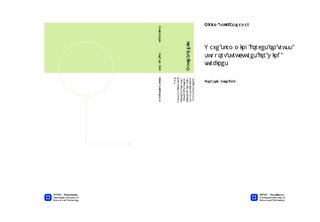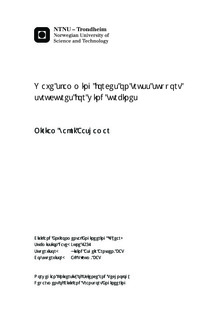| dc.contributor.advisor | Arntsen, Øivind Asgeir | nb_NO |
| dc.contributor.advisor | Tørum, Alf | nb_NO |
| dc.contributor.author | Aashamar, Miriam Zakri | nb_NO |
| dc.date.accessioned | 2014-12-19T11:28:55Z | |
| dc.date.available | 2014-12-19T11:28:55Z | |
| dc.date.created | 2012-11-08 | nb_NO |
| dc.date.issued | 2012 | nb_NO |
| dc.identifier | 565999 | nb_NO |
| dc.identifier | ntnudaim:7040 | nb_NO |
| dc.identifier.uri | http://hdl.handle.net/11250/232085 | |
| dc.description.abstract | This thesis is a study of the slamming forces from plunging breaking waves on truss support structures in shallow water. The main parts have been model testing and analysis on an existing 1:50 scale model of a truss support structure for wind turbines at NTNU.An expanding building of offshore structures has led to increased focus on wave forces. Large slamming forces from breaking waves can occur in shallow water. These forces will impact the structure in a much bigger way than non-breaking wave forces. Several researches have been investigating wave slamming forces on single vertical and inclined piles for the last 50 years, but there are still uncertainties at this area. This causes uncertainties in the dimension of structures exposed to these kinds of forces, and are therefore still under investigation.A large number of measurements have been executed. The tests have been run with both regular and irregular waves, with different frequencies and wave lengths. This give waves with different wave heights and breaking points, so that maximum forces can be determined. A new analyzing method described by Määtänen (1979) is applied to obtain the wave slamming force for response force time series. This is a simplified analysis based on an assumption of a single degree of freedom system subjected to a total force.The probability of occurrence of plunging breakers on the foreshore is investigated by Reedijk, et al. (2009). The method is used to find the probability of occurrence of plunging breakers on the truss structure for irregular waves. Maximum force response is given by waves that broke some distance away from the structure and not when the wave broke directly at the structure. The wave broke ahead and surged against the structure, which imposed forces with a slamming character in both the top and bottom force transducers.It is significant air entrained in the water during the breaking process, which may influence the results differently in small-scale model testing and in reality. The reason for this may be scale-effects that may impact interpretation of the results. The measured crest height is smaller due to air entrance in the waves as well. | nb_NO |
| dc.language | eng | nb_NO |
| dc.publisher | Institutt for bygg, anlegg og transport | nb_NO |
| dc.subject | ntnudaim:7040 | no_NO |
| dc.subject | MIBYGG Bygg- og miljøteknikk (2 årig) | no_NO |
| dc.subject | Marin byggteknikk | no_NO |
| dc.title | Wave slamming forces on truss support structures for wind turbines | nb_NO |
| dc.type | Master thesis | nb_NO |
| dc.source.pagenumber | 166 | nb_NO |
| dc.contributor.department | Norges teknisk-naturvitenskapelige universitet, Fakultet for ingeniørvitenskap og teknologi, Institutt for bygg, anlegg og transport | nb_NO |

